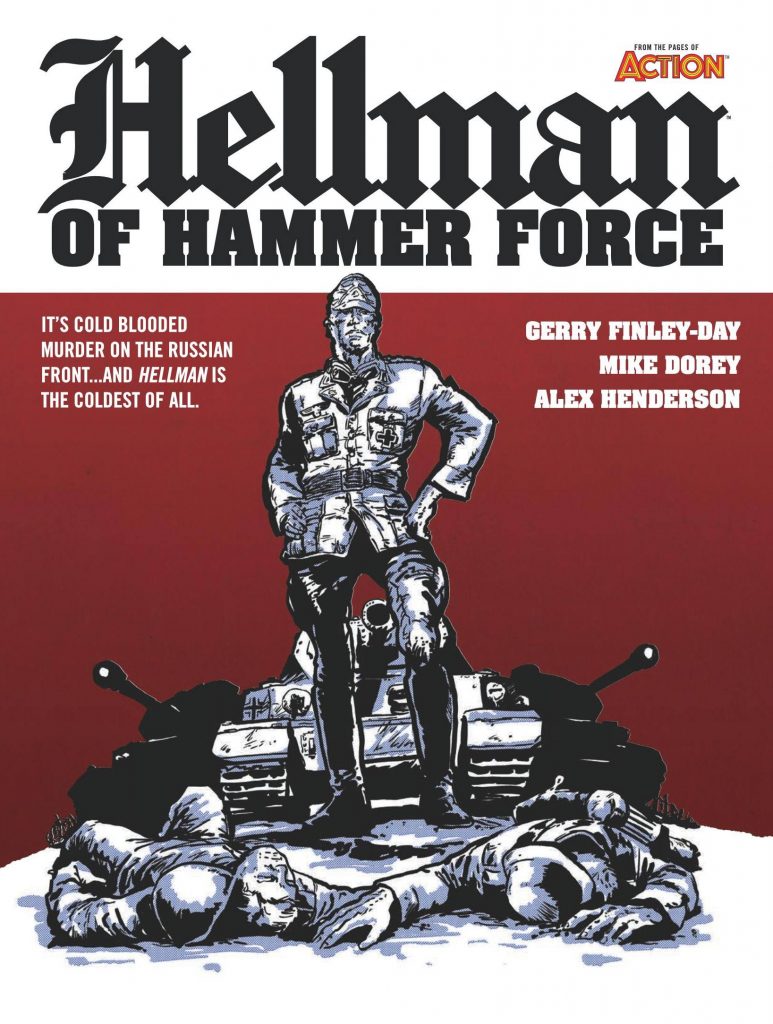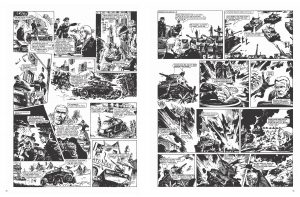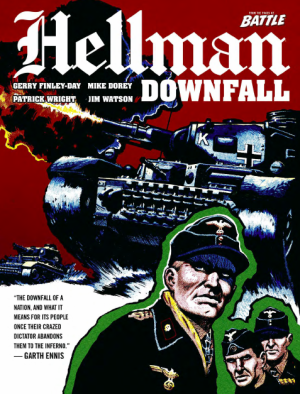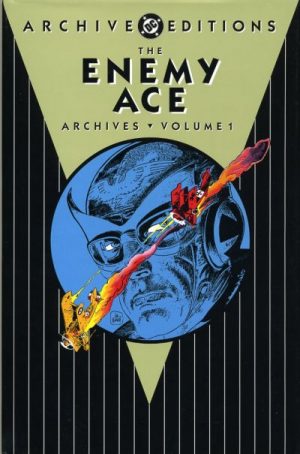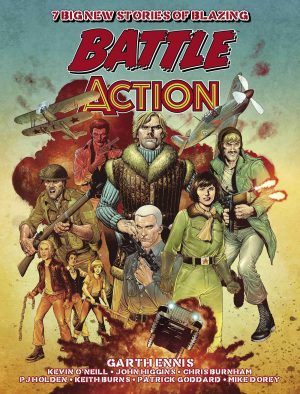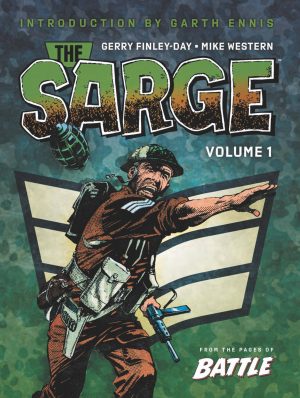Review by Frank Plowright
When introduced in 1976, the very idea of running a strip in a British comic starring a German tank commander during World War II remained a polarising decision thirty years after the war ended. The crucial distinction was that Kurt Hellman fought for his country, not for Nazi ideals, underlined by his being assigned an S.S. officer in the first episode, and Kastner suspicious of Hellman’s ideology is the spark that fires the early material. Hellman’s military decisions are questioned as Kastner believes he could have handled things more efficiently, considering the higher death count irrelevant. Gerry Finley-Day adding that dynamic to what might otherwise be a standard selection of war scenarios lifts it well above, and the tension the S.S. presence generates lasts all the way through this first selection.
Finley-Day’s plots pack a lot into three pages, which demands a lot from primary artist Mike Dorey, yet his efficient and detailed action art never slips below exceptional. Look at the detail on the vehicles provided for the left sample page, then consider that page has ten panels overall. Hellman is very distinctive, definitely meeting the Aryan criteria, and when a literal desert storm is required, Dorey whips up an airbrushed spatter like no other.
Hellman is first seen during the initial Nazi blitzkreig pushing the allied forces out of Belgium and France in 1940, then sees time in Greece, and serves as part of Rommel’s North African forces before ending up on the Russian front. Finley-Day makes good use of natural conditions in all locations, as well as coming up with inventive ideas that still make for unpredictable reading. The biggest change comes with the Russian sequence, where instead of having enlisted men under him, Hellman’s troops are now former criminals, released from jail to serve the cause. It adds the new tension of betrayal from within, and instead of anonymous soldiers who change episode by episode, there are now well defined supporting characters. Just before that occurs there’s one of the most suspenseful sequences as Hellman is overseen by another S.S. officer, Gruber, more efficient and sadistic than Kastner.
There is however, a distinct artistic downturn when Dorey leaves the feature midway through the North Africa sequence. The named replacement artist is Alex Henderson, but more than the single artist is clearly identifiable, even if they remain anonymous. Perhaps that’s for the best as one of them is particularly crude. The other (sample right) tells the story well enough, but without the detail and sheer panache Dorey brings to the earlier episodes.
While enlightened in so many respects, it’s disappointing to see the sub-editor didn’t buy into the mood, and from halfway many of the next episode teaser lines feature what would now be considered bigoted terms.
Some strips remembered from your youth really don’t merit revisiting, but Hellman of Hammer Force stands up without the need for nostalgia. Finley-Day conceives consistently interesting and unpredictable scripts, and their dramatic quality survives the years, even when not drawn by Dorey. Downfall continues Hellman’s war.
